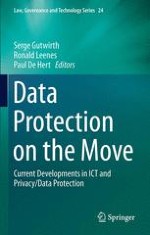2016 | OriginalPaper | Buchkapitel
A Precautionary Approach to Big Data Privacy
verfasst von : Arvind Narayanan, Joanna Huey, Edward W. Felten
Erschienen in: Data Protection on the Move
Verlag: Springer Netherlands
Aktivieren Sie unsere intelligente Suche, um passende Fachinhalte oder Patente zu finden.
Wählen Sie Textabschnitte aus um mit Künstlicher Intelligenz passenden Patente zu finden. powered by
Markieren Sie Textabschnitte, um KI-gestützt weitere passende Inhalte zu finden. powered by
